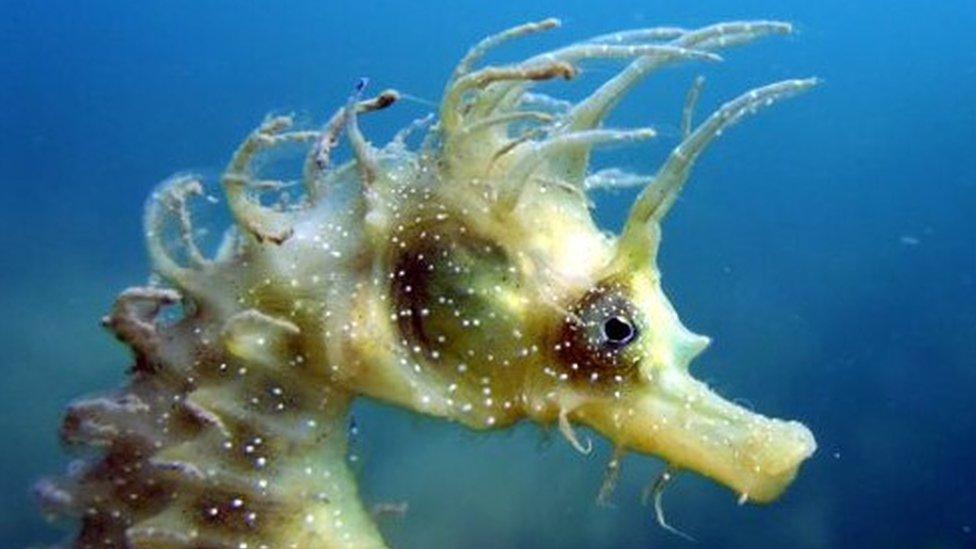Seahorse rescuer praised after Bournemouth beach discovery
- Published

The stricken seahorse was put in a bucket of water to keep him alive
A dog walker has been praised for rescuing a seahorse she found washed up on a beach.
Patience Saunders came across the creature on a New Year's Eve walk on Bournemouth beach and called the Seahorse Trust which advised her to return it to calmer waters.
The trust's Neil Garrick-Maidment said it was "incredibly rare" to find and rescue a live, washed-up seahorse.
He added it was also a "positive sign" of seahorse activity in the area.
Ms Saunders said: "It was amazing - I was quite surprised how big it was."
She described spotting an "unusual shape" lying on the sand at Bournemouth beach before realising it was a five-inch (12cm) seahorse and quickly putting it in a bucket of water.
"We'd had particularly rough seas for about three days - there was nowhere to put it back in the water, it would have washed back onto the beach."
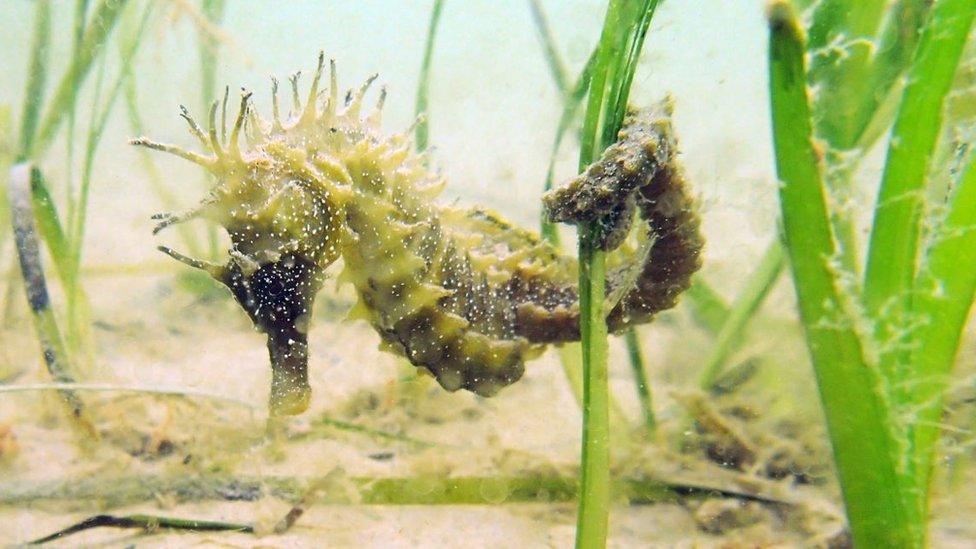
The UK's spiny (pictured) and short snouted seahorses have been protected by law since 2008
Mr Garrick-Maidment advised Ms Saunders to take the creature - believed to be a mature, male spiny seahorse - to more sheltered waters at Poole Harbour, where it was later released.
"Between us, we managed to get it into the water - hopefully to live a much longer life," he said.
He added the seahorse sighting followed a project to install eco-moorings at Studland Bay, in a bid to protect their seagrass habitat.
The moorings, for leisure craft, do not scar the seabed like traditional concrete and chain moorings, he said.
"It will help seagrass and hopefully numbers will increase over the years as the habitat improves," he added.
Both spiny and short snouted species species have been protected under the Wildlife and Countryside Act 1981 since 2008, which prevents them being killed, injured or taken.
Studland Bay has been designated as a Marine Conservation Zone (MCZ).
In 2020, the largest number of protected spiny seahorses were seen in the seagrass meadows off Dorset since 2008, the Seahorse Trust said.
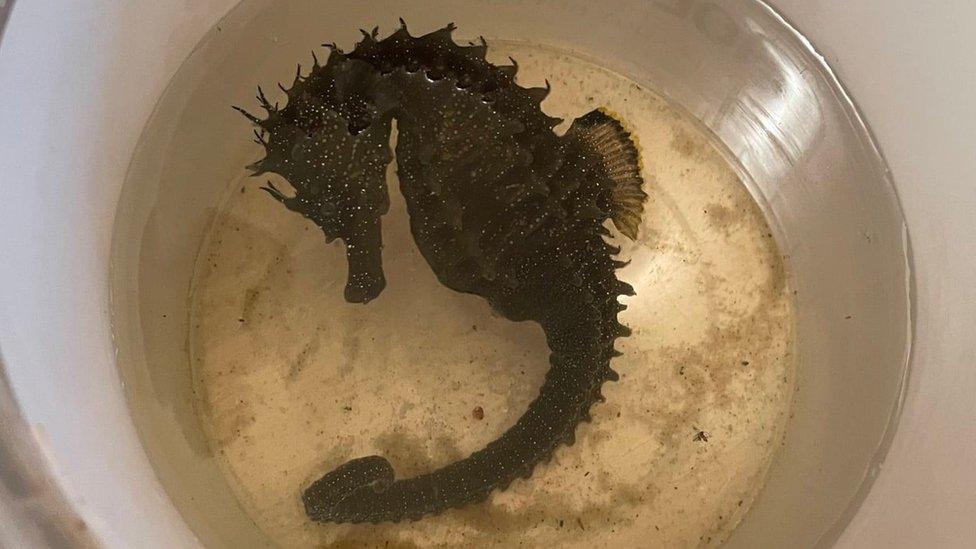
The seahorse was beginning to turn black in colour - a sign of stress

Follow BBC South on Facebook, external, Twitter, external, or Instagram, external. Send your story ideas to south.newsonline@bbc.co.uk, external.
Related topics
- Published1 July 2020
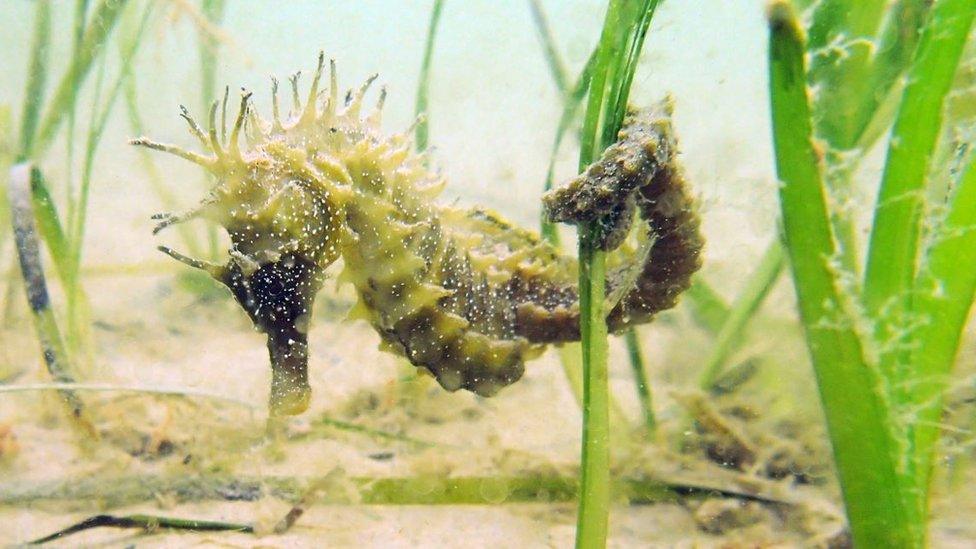
- Published2 June 2020

- Published18 April 2019

- Published25 May 2018

- Published16 February 2018
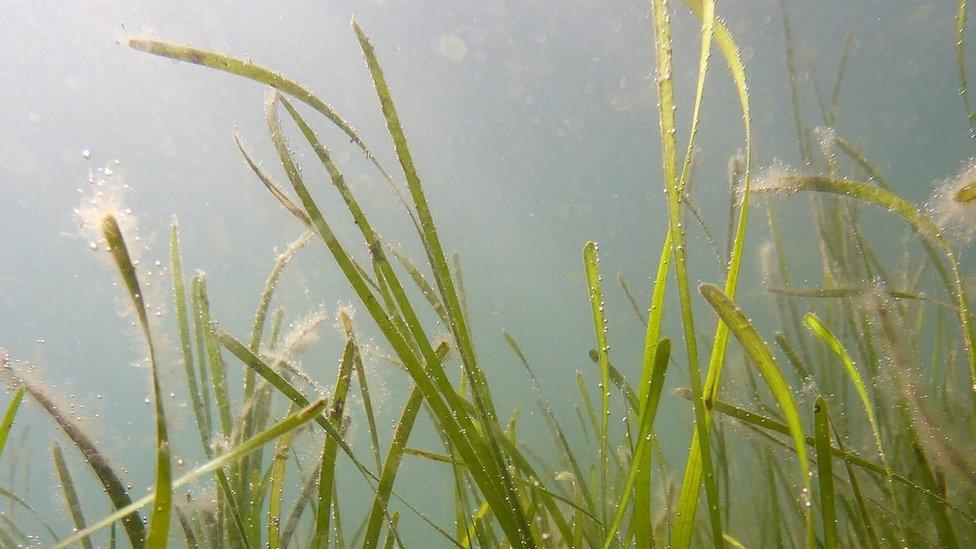
- Published3 October 2017

- Published21 October 2016
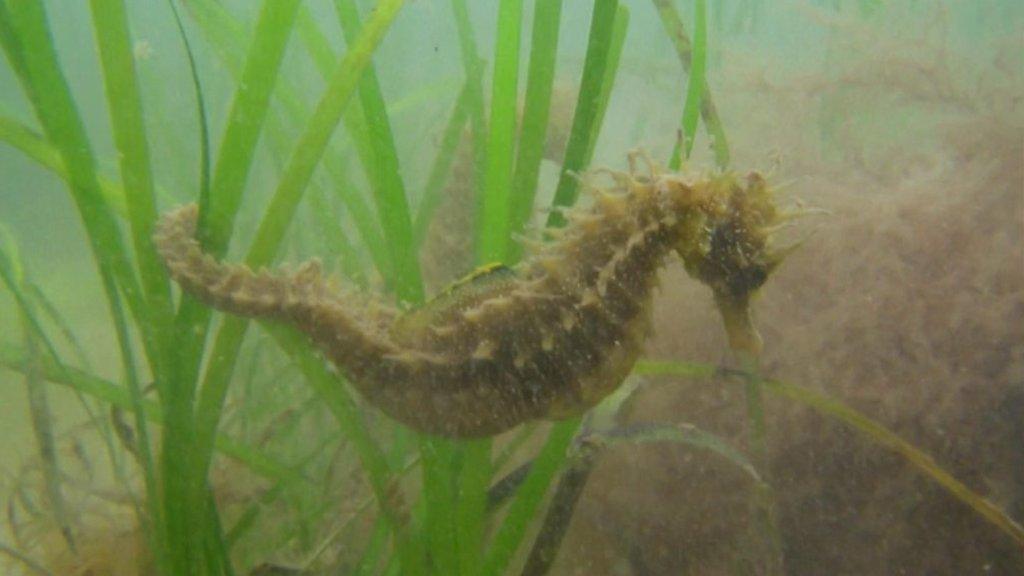
- Published11 April 2016
